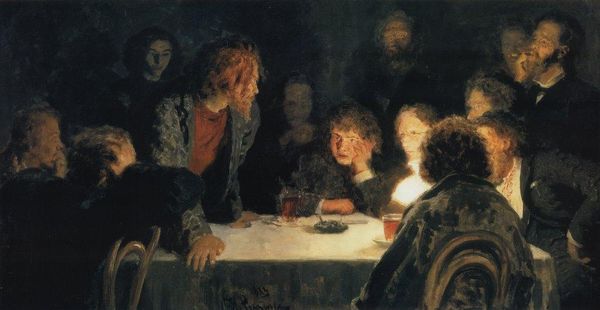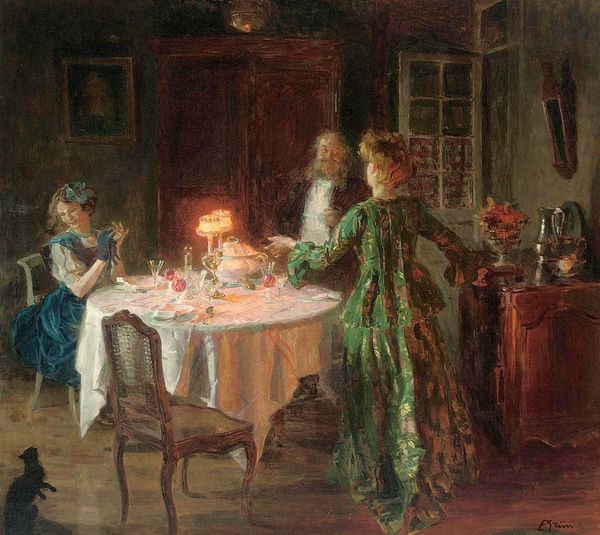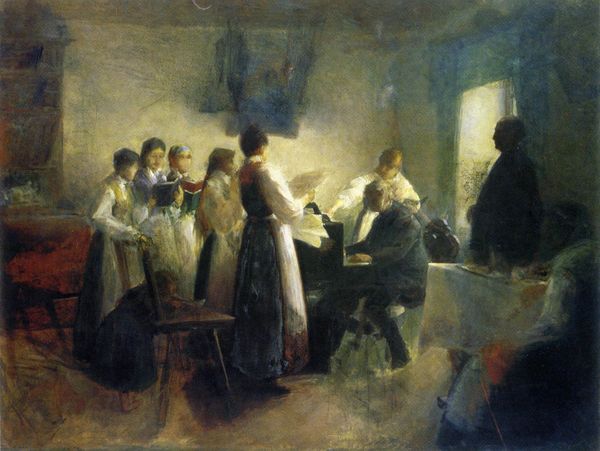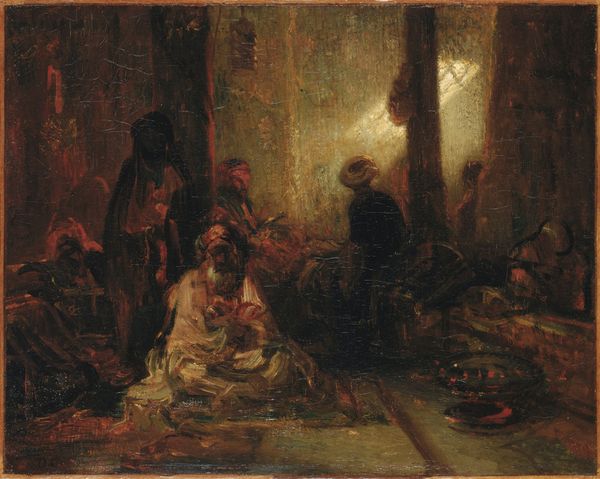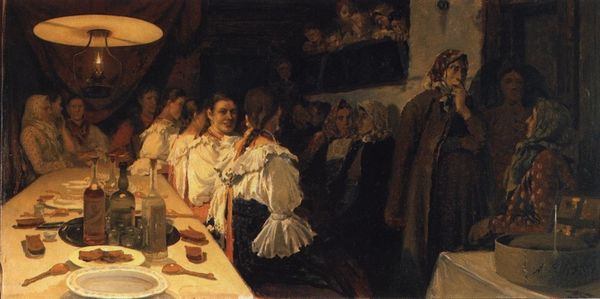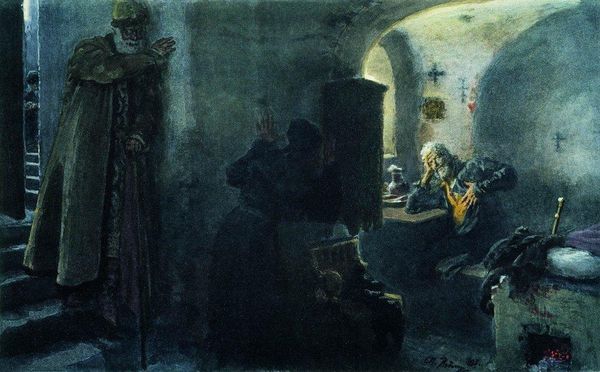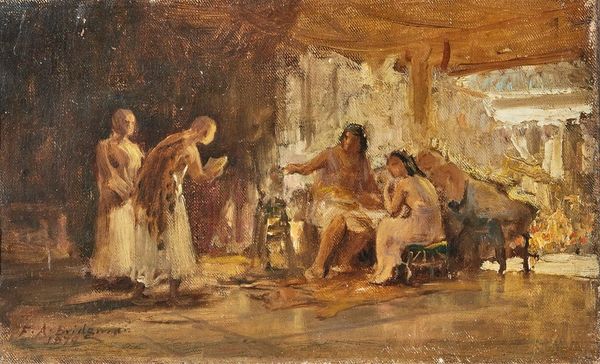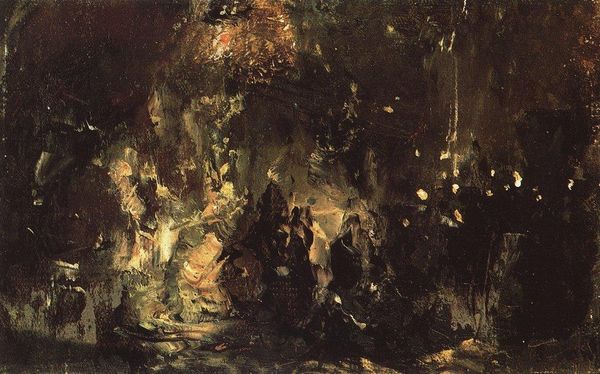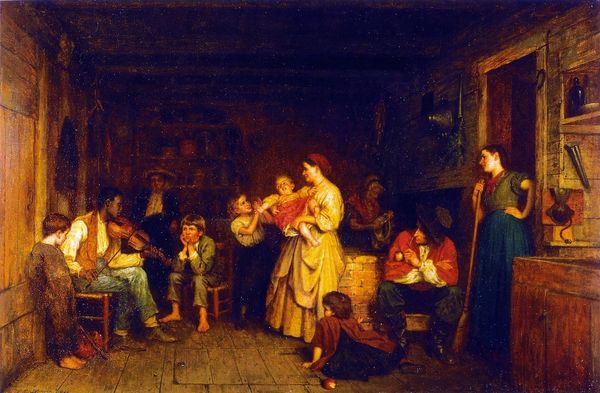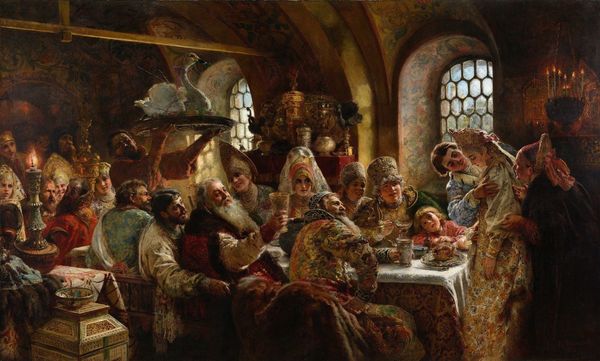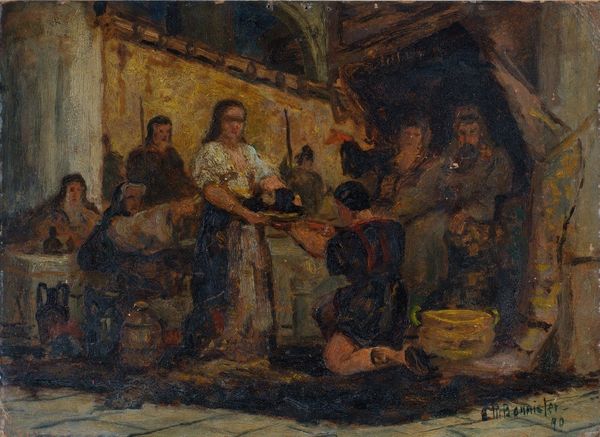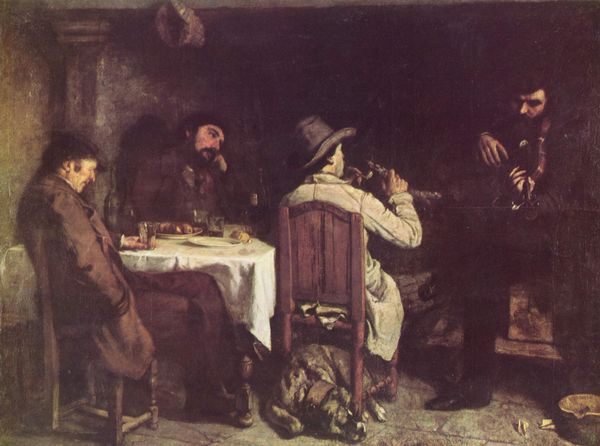
#
gouache
#
impressionistic
#
abstract painting
#
painted
#
possibly oil pastel
#
underpainting
#
paint stroke
#
painting painterly
#
watercolour bleed
#
watercolor
Dimensions: 52 x 76 cm
Copyright: Public domain
Editor: This is Ilya Repin's "Even if all falls away, I will not," painted in 1896. It looks like gouache and watercolor, with such thick strokes of paint! The scene is very dimly lit. Everyone is gathered at the table and it looks like a dramatic moment, something momentous is happening. What symbols or interpretations stand out to you? Curator: The scene undoubtedly depicts the Last Supper, recast through Repin's intensely personal and psychological lens. Notice how the light doesn't evenly illuminate – it flares intensely at Christ, drawing our eye and emphasizing his spiritual essence, but casts the rest in shadow. That contrast creates emotional unease. What figures draw your eye? Editor: Definitely Christ, because of the bright light, but also Judas I guess? He's in the shadows to Christ's left. His hands are clasped strangely. Is that symbolic? Curator: Precisely! Throughout centuries of art history, Judas is identifiable, often carrying specific attributes or gestures associated with betrayal. Think about the weight of that cultural baggage. His clutching hands indicate his inner turmoil, an iconic rendering that has been conveyed in many visual forms before Repin's rendering. The candles add another layer – reminders of mortality, vulnerability, the fragility of faith, or do you interpret their presence differently? Editor: That's really interesting! I hadn’t considered the emotional impact of the figures as representations of larger meanings. To me, the candle also represents truth emerging through darkness. Curator: A poignant and hopeful perspective! And that is how these images maintain their power. They evolve alongside the people who interpret them and inform future generations of symbolism and cultural continuity. Editor: Absolutely, seeing these symbols provides a deeper appreciation for both the painting itself and its context. Curator: Agreed. Examining how Repin utilized well-known symbolic language to explore the nuances of doubt and devotion grants us fresh appreciation for this well-known moment in history.
Comments
No comments
Be the first to comment and join the conversation on the ultimate creative platform.
